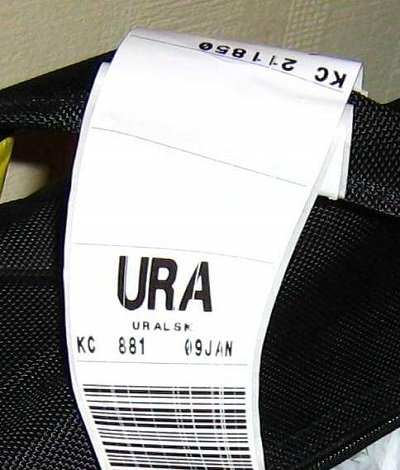Airport codes are often seen by people but they may not be recognized or identified as to what they are or what they indicate. To briefly mention, an airport code presents a three-letter or four-letter code for recognizing an airport in certain documents. These documents can relate to ticketing, flight reservations, etc. Functioning as a geocode, it can provide certain information about an airport. The codes can be of several types such as IATA and ICAO. Also, there is a purpose why such codes are used. To receive in-depth education about what is an airport code, its relevance, its types, and more, the readers will be suggested to read ahead.
What is an Airport Code?
As we explained earlier, an airport code can be understood as a three to four-letter code. The code appears to be useful for identifying an airport in the flight timetables, standard procedures relating to the industry, reservations, and other such documents. Some of these documents may also be inclusive of traffic control and luggage tags.
Certain readers may find it helpful to know that the development of these codes started to begin in the 1930s. This was prior to the existence of the International Air Transport Association (IATA). At that time, these codes were of two letters and meant for guiding pilots in recognizing a particular destination. In addition, through the presence of these codes, pilots and air traffic control were able to immediately communicate if the situation demanded.

The airport codes started comprising three letters when global destinations increased in number. The names in every country were formalized by the International Air Transport Association during the 1960s. This was mainly done to introduce greater clarity about the same among the flight passengers. In addition, freight carriers were able to receive better guidance and avoid confusion of various kinds.
In certain cases, four-letter codes may have been observed. However, in the case of four-letter airport codes, an additional letter was written at the beginning of the code relating to the main airport. It should be known that this letter was specified based on a country. Such long codes were usually termed ICAO codes.
It may amaze you to know that at least 17,576 codes can be formed based on the permutation shared by the IATA. At present, as many as 11,000 codes have been assigned. The breakdown of this number suggests that there are 816 rail stations, 8,965 codes for airports, 151 heliports, etc.
Understanding the Types of Airport Codes
Airport codes are of two different types. These types are inclusive of the International Air Transport Association or IATA codes and the International Civil Aviation Organization or ICAO codes.
The IATA codes are formed using three letters. They help in indicating a large number of commercial airports across the globe. Additionally, these codes can be used for helicopter, rail, bus, as well as ferry terminals provided that a commercial arrangement with airlines is in place for the transfer of baggage as well as ticketing.
The ICAO codes may be observed less. These four-letter codes can hint at those airports to whom the IATA codes have been assigned. Along with that, they may also be functional for the officials of air traffic control.
Knowing Why an Airport Code is Used
In the beginning, an airport code was seen as a useful element that worked as a map. This map helped in providing information about the airports worldwide. When these codes were not utilized, countries or cities would come up with naming procedures that may differ from other cities or countries. Since the countries were not necessarily familiar with every naming procedure, confusion often resulted as a consequence of the same.
As one particular naming procedure got adopted, ticketing systems could be universally formed. For maintaining records, with in-depth information, of the destinations that were covered by the airlines, this procedure proved to be helpful. With airport codes being functional, regulators can easily receive information on the status as well as the destinations. As per observation, establishing communications between air and ground is more convenient with the usage of these codes.
Another reason why an airport code is used is that it distinguishes the airports from one another when they fall in a particular region or city. Thus, helping to avoid confusion in a massive way.
Learning How Airports Receive their Codes
For the purpose of making them unique, airport codes are received based on certain factors. Usually, the IATA codes originate from the three letters that initially occur in the name of a city of a particular airport. The other ones may be formed on the basis of an airport’s name. What is worth noting is that two airports may not be enabled for sharing this code. In case the IATA code cannot be formed on the basis of the airport’s name or the airport city’s letters occurring in the beginning, the code will then be arrived at by referring to the said city’s historical study or a location in particular. Also, you should note that the codes may not be randomly generated.
By and large, it can be Said
An airport code may have been seen by you but you may not have been able to know what that code exactly means or symbolizes. After going through this reading, you would have been able to understand that it represents a three/four-letter code. The code serves the chief function of making an airport recognizable. This code can be of different types such as IATA or ICAO codes. The IATA codes can be more frequently found than the other type. The airport codes are important as they play a key role in removing the confusion with respect to the abbreviated names used for different airports in different countries. With these codes in place, no two airports can share the same set of three or four letters. Thus regulators and other airport officials can know which airport is being referred to when a particular code is used.






Eileen Fontaine says:
what is the airport code for Richmond Virginia
Darrell says:
The Richmond Virginia Airport Code is RIC